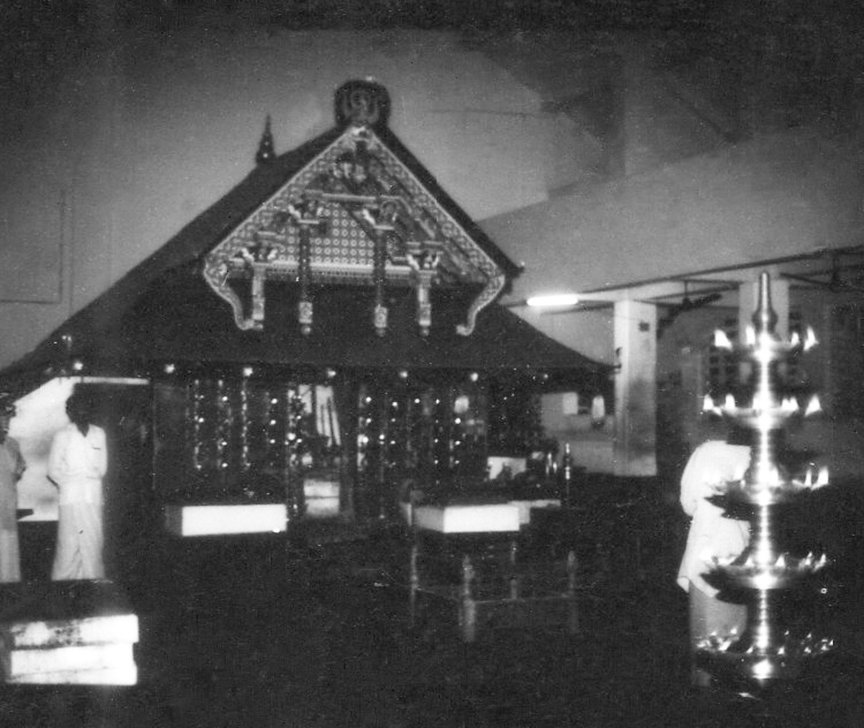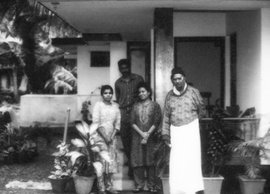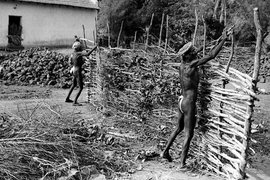The temple at Parassini Kadavu near Kalliasseri is unusual. It has always been open to all castes. The priests are from the backward communities. Its deity, Muthappan, is known as 'The God of the Poor'. Toddy and meat are among the offerings to the almighty. Not many shrines count bronzes of dogs amongst their idols. This one in Kannur district of Kerala, does. Muthappan, after all, is the Lord of the Hunters.
In the 1930s, Muthappan was also the Lord of the Hunted. Especially of Left-wing nationalists and communists on the run from the British. "The temple even joined hands with us to resist the janmi s (feudal landlords) of the area," says K.P.R. Rayarappan. He was active in all the battles in this region, before and after 1947. "The main figures of the Left in the freedom struggle found shelter here at some point."
This odd alliance between disbeliever and devout had a logical basis. There was a strong overlap in the class base of the two. Both were against upper caste oppression. Each faced landlord hostility. And, in the strong nationalist ferment of the period, everybody was against the British.
"The big janmi here wanted to grab this temple," says Rayarappan. "Its huge revenue was too tempting for him." That's easy to believe. Even now, the Muthappan temple feeds 4,000 people daily and 6,000 on the weekend. It feeds all the school children in its area every day.
To shelter those the temple did in the '30s and '40s was to take unusual risks. But then, Kalliasseri and its neighbours are unusual. Their political consciousness goes back a long way. Take the textile mill at Pappinesseri, which drew workers from villages all around. It saw stubborn action against the British in the '40s. One strike in 1946 lasted 100 days. That was when people in this Kerala village struck work in sympathy with the Royal Indian Navy's mutiny in Bombay.
"In this area," says Payanadan Yashoda, 81, "Section 144 (prohibitory orders) was imposed for over a year. Yet we were active." From the '30s on, Yashoda was a leader of the teachers' movement that played a crucial role in the politics of Malabar.
What made battles here different from so many others? "We were organised," says Yashoda. "We worked on political lines. Our goals were clear. There was mass consciousness and participation. We were in the nationalist movement. We were also in social reform and anti-caste agitations. And there were the land struggles. Everything was linked."
Kalliasseri and its neighbours have made use of their 50 years of freedom. There is near hundred per cent literacy and every child goes to school. Some of their other indicators, too, can compare with those of a few western societies. Yashoda sees these as the gains of organised mass political action.
But isn't that exaggerating things a bit? Especially the role of organised political movements? After all, Kerala had higher literacy rates even earlier. Yashoda, who was the first woman teacher in her taluk , is dismissive. "As late as the 1930s, the literacy rate in Malabar was around eight per cent. In Travancore, it was 40 per cent. So we have in fact caught up through our efforts."
In that sense Malabar presents a rare case within India. A regional gap actually bridged in a short time. It trailed Travancore and Cochin in other respects, too. "Our organised political activity made the change," says Rayarappan. "The land reforms of the '50s and '60s upset many structures, including caste." Education and health standards improved rapidly. In 1928, a mere 24 households held 43 per cent of land in Kalliasseri. Today, just 13 households own more than five acres of land. Besides, their share of the total land is only six per cent.
Kalliasseri's residents have seen a big improvement in their diet. Milk and meat consumption has gone up. And you can't tell a manual labourer here from the way he or she dresses.
In the '80s, the massive literacy drive of the state saw more gains. Efforts by bodies like the Kerala Sastra Sahitya Parishad opened new doors. All these, linked as they were, built upon the solid basis of the region's political traditions. The Malabar, including Kalliasseri, has been a pioneer in other ways, too.
"Kalliasseri was already experimenting in the late '30s and '40s. It threw up Producers and Consumers Cooperatives," says Mohan Das, a lecturer in the Krishna Menon College at Kannur. "And these inspired the fair price shops that came much later."
"They developed in a period of drought and hunger. The janmi s demands on the grain of farmers were getting harsher. Perhaps the janmis themselves were facing greater demands from the British. Earlier, there used to be some concessions on the amount of grain collected from people in times of drought. In the '40s, that ceased."
December 1946 saw a crisis point, says Agni Sharman Namboodiri, a retired teacher. "People resisted the janmi s' effort to grab grain in Karivellur village. Two died in the firing that followed. And there was terror. But it sparked off a huge anti- janmi spirit." One that inspired the region's successful fight for land reform.
Today, alongside Kalliasseri's successes are alarming problems. "Agriculture is a mess," says Rayarappan. "The yield is down. There is less work for farm labourers."
As Mohan Das puts it: "The conversion of paddy land for building houses and for cash crops has caused great damage. Take, for instance, one huge field owned by the janmi . About 50 per cent of Kalliasseri's paddy land was in that field. Now houses and cash crops cover it. There is a growing consciousness about the damage. But much has already been lost."
Joblessness is high. And the participation rate for women in the workforce, as one study shows, is less than half that of males. Close to 50 per cent of the women in the labour force are unemployed. Women hold most of the low-skilled jobs. And within those, they earn less than males.
Daunting problems. But there is no sense of despair here. In Kerala's experiments with panchayati raj, Kalliasseri is at the cutting edge. Like over 900 other panchayats in the state, it has drawn up its own Development Plan. One based on data gathered by the people themselves. Much of the activity stems from local resources and voluntary labour. "People here have built, among other things, 62 kilometres of roads in this panchayat," says Rayarappan.
Participation in gram sabha meetings is high and vocal. And nearly 1,200 volunteers have led Kalliasseri to another landmark: it was the first panchayat in the country to undertake a Peoples' Resource Mapping Programme. An accurate picture of the natural and human resource status of the village has come up from locals helped by experts from outside. The village's plan includes a section on the likely environmental impact of its projects.
A 'voluntary technical corps' of retired people - engineers, government officials - helps oversee projects. There are over 5,000 VTC members across the state now.
The challenges remain huge. And the causes of many of the village's problems lie beyond its boundaries. But Kalliasseri remains confident. As Rayarappan put it: "We never stopped fighting."
Not even after 1947.
This story originally appeared in The Times of India on August 29, 1997.
Photos: P. Sainath
More in
this series
here:
Panimara's foot soldiers of freedom - 1
Panimara's foot soldiers of freedom - 2
The last battle of Laxmi Panda
Godavari: and the police still await an attack
Sherpur: big sacrifice, short memory

The temple at Parassini Kadavu near Kalliasseri gave sanctuary to nationalists on the run from the British in the ’30s and '40s. The deity, Muthappan, is the Lord of the Hunters, and bronze dogs are amongst the idols


